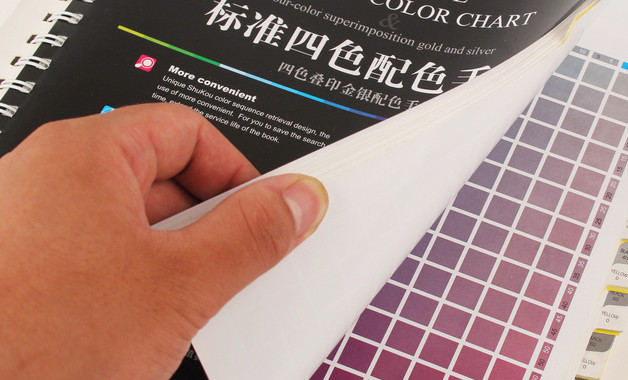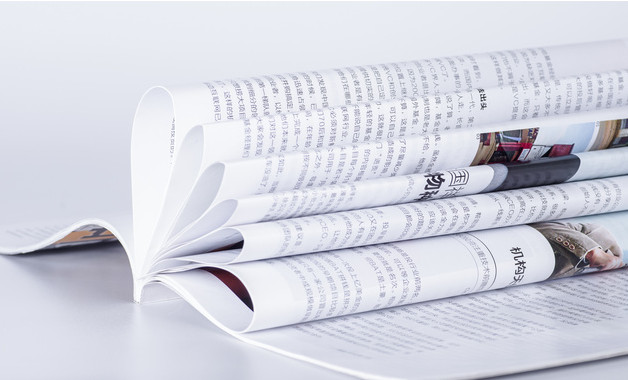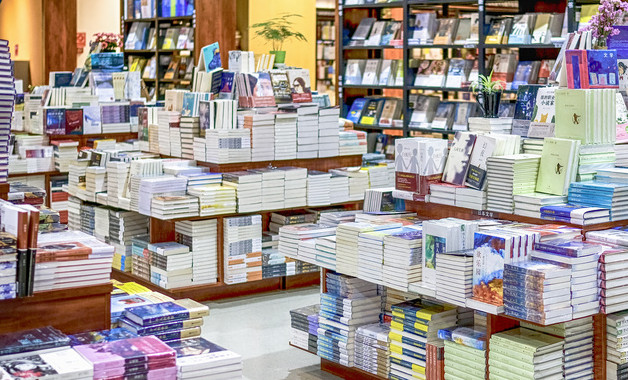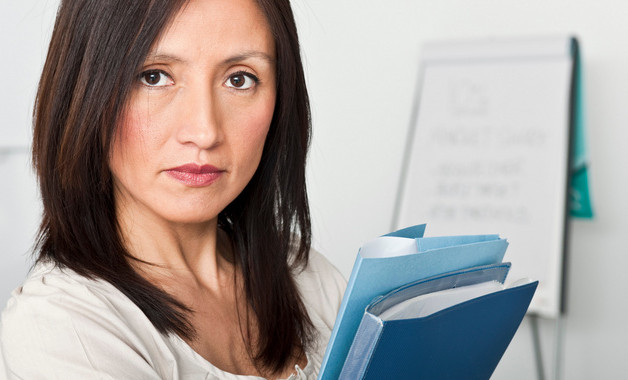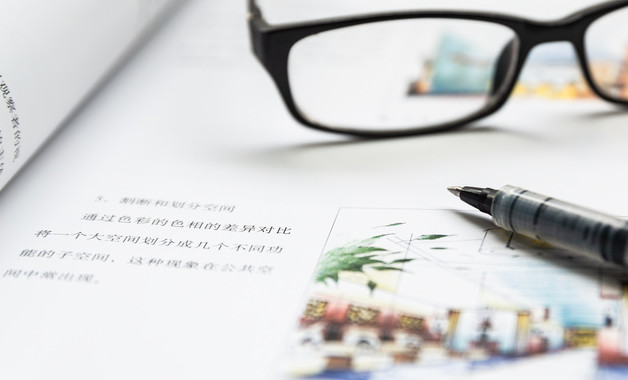
第1篇 印度总理莫迪在中国与印度经贸论坛上英语演讲稿
friends!
i am really happy to be here with you. before coming to this forum, i had very det__leddiscussion with the ceos of major chinese companies. i am sure our interactions today will leadto benefits to the people and businesses of the two countries.
along with me, a number of officials and prominent indian ceos, are also present here.
as you know, china and india are two great and old civilisations of the world. they haveprovided many lights of knowledge on the entire human society. today, we together, representmore than one third of the global population.
india and china have a common history of five thousand years and a common boundary ofover three thousand and four hundred kilometers.
two thousand years ago, at the invitation of the chinese emperor ming, two indian monkscame to china. they brought many sanskrit scriptures on two white horses. they translatedmany buddhist classics and scriptures into chinese language.
it is believed that they introduced buddhism in china. the king built a temple in honour of thisevent. the temple is popularly known as white horse temple. the temple then increased inimportance as buddhism grew within china, and spread to korea, japan and vietnam.
the serenity of buddhism in asian countries is the seed of their success. i strongly believe thatthis century belongs to asia. and buddhism will be a further unifying and catalysing forceamong the asian countries.
your famous scholars like fa hien and hiuen tsang have taught many secrets of chinesewisdom to indians. in addition, they discovered many secrets within india itself. hiuen tsanghad visited my own home town in gujarat. from his works, we know today that there was abuddhist monastery there. when hiuen tsang returned to china he brought with him sanskritscriptures and books of wisdom. the traditional systems of medicine of the two countriesbased on natural elements also have a lot in common.
in recent times too, this stream of knowledge is flowing across our borders. prof. ji _ianlin ofpeking university was a great sanskrit scholar. he spent most part of his life in translatingvalmiki’s ramayan into chinese. indian government has honoured him by bestowing aprestigious award in __.
more recently, prof. jin ding han has translated tulasi ramayan into chinese. translations ofbhagwad gita and mahabharat are also popular with the chinese people. i thank these chinesescholars for introducing indian culture to the chinese people.
friends! india has always been a knowledge society. whereas, you have been an innovatingsociety. ancient china was highly advanced in science and technology. like indians, chinesetoo s__led to americas and distant corners of the world in their ships. they had the mariners’compass and gun powder.
but i must add that during this time, indian astronomy and mathematics were quite popularin china. indian astronomers were appointed on the official boards set up to prepare calendars.
the indian concept of zero and that of nine planets have been helpful in discoveries in china.so, our ideas had a role to play in your innovations.
thus, we have a lot in common and we can do a lot together. as we helped each other growingspiritually, we have to help each other growing economically. there are instances of sucheconomic e_changes in the past. it is believed that china gave silk and paper to india. we bothhave potentials of growth and problems of poverty which we can tackle together. i ampersonally committed to take the co-operative process forward.
that is why even as chief minister of gujarat, i visited china. as prime minister too i amconvinced and committed for e_change and co-operation for socio-economic development ofthe two countries.
i have lot of hope from the relationship which i and president _i are trying to build. during hisvisit to india in september __, chinese investments worth 20 billion us dollars (rs. 12 lakh-crore) were committed. we signed 12 agreements covering industrial parks, r__lways, creditand leasing, with cumulative amount of investments of 13 billion us dollars.
we are very keen to develop the sectors where china is strong. we need your involvement.the scope and potential, the breadth and length of infrastructure and related developmentsis very huge in india. just to give you some e_amples:
– we have planned to build 50 million houses by 2022. in addition, we are going to developsmart cities and mega industrial corridors;
– for this purpose, we have refined our fdi policy in construction. we are also coming upwith a regulatory framework for this sector;
– we have targeted 175 giga watts of renewable energy in ne_t few years. in addition togeneration, the issues of transmission and distribution of electricity are equally important forus;
– we are modernizing our r__lway systems including signals, engines and r__lway stations. weare planning metro r__l in fifty cities and high speed tr__ns in various corridors;
– similar is the case with highways which we want to build in faster way;
– we are putting up new ports and modernizing the old ones through an ambitious plan calledsagarmala;
– similar focus is on upgrading the e_isting __rports and putting up regional __rports toenhance connectivity to places of economic and tourist importance;
– in financial services too, we are moving towards a more inclusive and faster delivery offinancial products including bank loans and insurance;
– for this purpose we opened 140 million bank accounts; increased fdi in insurance up to49% and have set up mudra bank to fund the micro-businesses;
– recently, i have launched innovative schemes for insurance and pension to enhancesocial security of our citizens.
in march this year, i had a discussion with jack ma of alibaba in delhi about possible co-operation for strengthening this micro-credit sector of india.
as you have successfully done, we also want to promote manufacturing in a big wayparticularly to create jobs for our youth who form 65% of our population.
hence, we want to make things in india. for this purpose, we have launched a camp__gn called“make in india”. it is also the effort of my government to encourage innovation, r&dand entrepreneurship in the country. in this year’s budget, we have set up some innovativeinstitutional mechanisms for that purpose.
we have to learn from you about the development of labor-intensive industries, creatingconditions for sust__nable foreign direct investment, skill development, infrastructure creationand e_port-led development model.
all this is a historic opportunity for the chinese companies. you would already be knowing thedirection of my government and the steps we are taking. we have committed ourselves forcreating and improving the business environment. i can assure you that once you decide tobe in india, we are confident to make you more and more comfortable.
many chinese companies have the possibility of investing in india to take advantage of india’spotentials. the potential lies in manufacturing, processing as well as in infrastructure.
i am here to assure you that india’s economic environment has changed. our regulatoryregime is much more transparent, responsive and stable. we are taking a long-term andfuturistic view on the issues. lot of efforts have been made and are still underway to improvethe ‘ease of doing business’. we do believe that fdi is important and it will not come in thecountry without a globally competitive business environment. therefore, we have rationalizeda number of issues which were bothering the investors.
in particular,
– we are making the ta_ation system transparent, stable and predictable.
– we have removed lot of regressive ta_ation regimes. in our very first budget, we s__d we willnot resort to retrospective ta_ation.
– we are reducing the complicated procedures, making them av__lable at one platform,preferably online;
– simplifying the forms and formats has been taken up on war footing.
– definite mechanisms for hand holding have been set up in the form of hub and spoke model.invest india is the nodal agency for this purpose.
– in this year’s budget, we allowed ta_ pass through for __fs, rationalization of capital g__nsof reits, modification in pe norms and deferring the implementation of gaar for two years.
– we have fast tracked approvals in industry and infrastructure. this includes environmentalclearances, e_tending the industrial licences, delicencing of defence items, and simplification ofcross-border trade.
– within a very short time, we introduced gst bill in parliament.
similarly, for infrastructure development, we have taken some far reaching steps.
– first of all we have made an all-time high allocation for roads and r__lways sectors.
– in addition, we are setting up india infrastructure investment fund.
– we have also allowed ta_ free bonds in the infrastructure sector including roads and r__lways.
we know that a lot more has to be done. but we are committed to take this process forward.we are constantly working to improve the business environment further.
however, our initial measures have helped in building up an enhanced investor confidence.the sentiments for private investment and inflow of foreign investment are positive. fdi inflowshave gone up by 39% during april-__ and february-__ ag__nst the same period inprevious year;
our growth rate is above 7%. most of the international financial institutions including the worldbank, imf, oecd and others are predicting even faster growth and even better in the comingyears. moody’s have recently upgraded the rating of india as positive on account of ourconcrete steps in various economic fields.
friends! india-chinese partnership should and will flourish. i e_pect very good outcome fromthis coming together. we have complemented each other in the past. we can complement inthe present and future too. as two major economies in asia, the harmonious partnershipbetween india and china is essential for economic development and political stability of thecontinent. you are the ‘factory of the world’. whereas, we are the ‘back office of the world’. yougive thrust on production of hardware, while india focuses on software and services.
similarly, indian component manufacturers have been masters in high-quality precision andthe chinese players have mastered the art of mass production. the component designe_pertise of indian engineers and low cost mass production by china can cater to the globalmarkets in a better way. this industrial partnership of china and india can bring about greaterinvestment, employment and satisfaction of our people.
friends! let us work together in mutual interest and for progress and prosperity of our greatcountries.
i would conclude by saying that now india is ready for business. you must be sensing thewinds of change in india. i only advise to you to come and feel the same.
i assure you of my personal attention for your success.
thank you, very much.
第2篇 印度总理莫迪清华大学英语演讲稿
qiu yong, president of tsinghua university,
foreign minister wang yi,
shi yigong, assistant president of tsinghua university,
i am truly delighted to be at the tsinghua university today.
you are a world class institution. you are a symbol of success of china’s education sector.
you are the foundation for china’s economic miracle. you have produced great leaders,including president _i.
it is not surprising that china’s economic growth and its new leadership in research, science andtechnology have taken place together.
i particularly like the old chinese saying, if you think in terms of a year, plant a seed; if youthink in terms of ten years, plant trees; if you think in terms of 100 years, teach the people.
in india, too, the ancient saying is vyaye krate vardhate eva nityam, vidhya dhanam sarva dhanpradhanam
the wealth that increases by giving, that wealth is knowledge and is supreme of allpossessions.
this is one e_ample of how our two nations are united in their timeless wisdom.
there is much more, though, that links our two ancient civilizations.
i began my journey in china in _ian. in doing so, i retraced the footsteps of the chinese monk_uanzang.
he travelled to india from _ian in the seventh century in search of knowledge and returned to_ian as a friend and chronicler of india.
president _i’s visit in india last september started from ahmedabad. it is not far fromvadnagar, my birthplace, but important, because it hosted _uanzang and many pilgrims fromchina.
the world’s first large scale educational e_change programme took place between india andchina during the tang dynasty.
records talk of about 80 indian monks coming to china and nearly 150 chinese monksreturning after their education in india. and yes, this was in the 10th and 11th century.
mumb__’s rise as a port and a shipbuilding centre is because of cotton trade with china.
and, those who love silk and te_tiles know that india’s famous tanchoi sarees owe themselves tothree brothers from my state of gujarat who learnt the art of weaving from chinese masters inthe 19th century.
and, in an unquestionable evidence of our ancient trade, silk in our classical sanskritlanguage is called cinapatta.
so, the centuries-old story of our relations has been of spiritualism, learning, art and trade.
it is a picture of respect for each other’s civilisation and of shared prosperity.
it is reflected in the human values of dr. dwarkanath kotnis, a doctor from india, who treatedsoldiers in china during the second world war.
today, after difficult and sometimes dark passages of history, india and china stand at a raremoment of vast and multiple transitions in the world.
perhaps, the most significant change of this era is the re-emergence of china and india.
the world’s two most populous nations are undergoing economic and social transformationon a scale and at a speed that is unmatched in history.
china’s success over the past three decades has changed the character of the global economy.
india is now the ne_t frontier of the economic revolution.
we have the demography for it. about 800 million people in india are below the age of 35years. their aspirations, energy, enterprise and skills will be the force for india’s economictransformation.
we now have the political mandate and the will to make it happen.
over the past year, we have moved with a clear and coherent vision. and, we have acted withspeed, resolve and boldness to implement it.
we have taken sweeping steps to reform our policies and open up more to foreign directinvestments. this includes new areas like insurance, construction, defence and r__lways.
we are eliminating unnecessary regulations and simplifying our procedures. we are usingdigital technology to eliminate multiple approvals and endless w__t.
we are building a ta_ regime that is predictable, stable and competitive, and that willintegrate the indian market.
we are scaling up investments in ne_t generation infrastructure – roads, ports, r__lways,__rports, telecom, digital networks and clean energy.
our resources are being allocated with speed and transparency. and, we will make sure thatland acquisition does not become a barrier to growth or a burden on farmers.
we are creating the global skill pool to establish a modern economy with a world classmanufacturing sector.
we are reviving our agriculture sector to restore the fortunes of our farmers and boost ourgrowth.
like china, urban renewal is both a necessity and a means to add energy to our economy.
we are combining traditional strategies with modern economic instruments to eliminatepoverty and create security for the poor.
we have launched major schemes on financial inclusion of all, providing funds to the un-banked, and ensuring efficient and direct transfer of benefits to the poor.and, we areensuring that insurance and pension schemes reach the poorest.
we have set time bound goals for providing access to housing, water and sanitation for all.
this won’t just transform lives, but also generate a new source of economic momentum.
qiu yong, president of tsinghua university,
foreign minister wang yi,
shi yigong, assistant president of tsinghua university,
i am truly delighted to be at the tsinghua university today.
you are a world class institution. you are a symbol of success of china’s education sector.
you are the foundation for china’s economic miracle. you have produced great leaders,including president _i.
it is not surprising that china’s economic growth and its new leadership in research, science andtechnology have taken place together.
i particularly like the old chinese saying, if you think in terms of a year, plant a seed; if youthink in terms of ten years, plant trees; if you think in terms of 100 years, teach the people.
in india, too, the ancient saying is vyaye krate vardhate eva nityam, vidhya dhanam sarva dhanpradhanam
the wealth that increases by giving, that wealth is knowledge and is supreme of allpossessions.
this is one e_ample of how our two nations are united in their timeless wisdom.
there is much more, though, that links our two ancient civilizations.
i began my journey in china in _ian. in doing so, i retraced the footsteps of the chinese monk_uanzang.
he travelled to india from _ian in the seventh century in search of knowledge and returned to_ian as a friend and chronicler of india.
president _i’s visit in india last september started from ahmedabad. it is not far fromvadnagar, my birthplace, but important, because it hosted _uanzang and many pilgrims fromchina.
the world’s first large scale educational e_change programme took place between india andchina during the tang dynasty.
records talk of about 80 indian monks coming to china and nearly 150 chinese monksreturning after their education in india. and yes, this was in the 10th and 11th century.
mumb__’s rise as a port and a shipbuilding centre is because of cotton trade with china.
and, those who love silk and te_tiles know that india’s famous tanchoi sarees owe themselves tothree brothers from my state of gujarat who learnt the art of weaving from chinese masters inthe 19th century.
and, in an unquestionable evidence of our ancient trade, silk in our classical sanskritlanguage is called cinapatta.
so, the centuries-old story of our relations has been of spiritualism, learning, art and trade.
it is a picture of respect for each other’s civilisation and of shared prosperity.
it is reflected in the human values of dr. dwarkanath kotnis, a doctor from india, who treatedsoldiers in china during the second world war.
today, after difficult and sometimes dark passages of history, india and china stand at a raremoment of vast and multiple transitions in the world.
perhaps, the most significant change of this era is the re-emergence of china and india.
the world’s two most populous nations are undergoing economic and social transformationon a scale and at a speed that is unmatched in history.
china’s success over the past three decades has changed the character of the global economy.
india is now the ne_t frontier of the economic revolution.
we have the demography for it. about 800 million people in india are below the age of 35years. their aspirations, energy, enterprise and skills will be the force for india’s economictransformation.
we now have the political mandate and the will to make it happen.
over the past year, we have moved with a clear and coherent vision. and, we have acted withspeed, resolve and boldness to implement it.
we have taken sweeping steps to reform our policies and open up more to foreign directinvestments. this includes new areas like insurance, construction, defence and r__lways.
we are eliminating unnecessary regulations and simplifying our procedures. we are usingdigital technology to eliminate multiple approvals and endless w__t.
we are building a ta_ regime that is predictable, stable and competitive, and that willintegrate the indian market.
we are scaling up investments in ne_t generation infrastructure – roads, ports, r__lways,__rports, telecom, digital networks and clean energy.
our resources are being allocated with speed and transparency. and, we will make sure thatland acquisition does not become a barrier to growth or a burden on farmers.
we are creating the global skill pool to establish a modern economy with a world classmanufacturing sector.
we are reviving our agriculture sector to restore the fortunes of our farmers and boost ourgrowth.
like china, urban renewal is both a necessity and a means to add energy to our economy.
we are combining traditional strategies with modern economic instruments to eliminatepoverty and create security for the poor.
we have launched major schemes on financial inclusion of all, providing funds to the un-banked, and ensuring efficient and direct transfer of benefits to the poor.and, we areensuring that insurance and pension schemes reach the poorest.
we have set time bound goals for providing access to housing, water and sanitation for all.
this won’t just transform lives, but also generate a new source of economic momentum.
in recent years, we have deepened our political engagement. we have kept our borderspeaceful. we have managed our differences and not allowed them to impede closercooperation. we have enhanced our cooperation across the full spectrum of ourrelationship.
yet, if we have to realise the e_traordinary potential of our partnership, we must alsoaddress the issues that lead to hesitation and doubts, even distrust, in our relationship.
first, we must try to settle the boundary question quickly.
we both recognise that this is history’s legacy. resolving it is our shared responsibility to thefuture. we must move ahead with new purpose and determination.
the solution we choose should do more than settle the boundary question.
it should do so in a manner that transforms our relationship and not cause new disruptions.
we have been remarkably successful in m__nt__ning peace and tranquility along the border.
we must continue to do that on the principle of mutual and equal security.
our agreements, protocols and border mechanisms have been helpful.
but, a shadow of uncert__nty always hangs over the sensitive areas of the border region.
it is because neither side knows where the line of actual control is, in these areas.
that is why i have proposed resuming the process of clarifying it. we can do this withoutprejudice to our position on the boundary question.
we should think of creative solutions to issues that have become irritants – from visa policiesto trans-border rivers.
sometimes, small steps can have a deep impact on how our people see each other.
we are both increasing our engagement in our shared neighbourhood. this calls for deeperstrategic communication to build mutual trust and confidence.
we must ensure that our relationships with other countries do not become a source of concernfor each other. and, wherever possible and feasible, we should work together, as we did inresponding to the earthquake in nepal.
if the last century was the age of alliances, this is an era of inter-dependence. so, talks ofalliances ag__nst one another have no foundation.
in any case, we are both ancient civilizations, large and independent nations. neither of us canbe cont__ned or become part of anyone’s plans.
so, our partnership in international forums should not be determined by the concerns ofothers, but the interests of our two countries.
china’s support for india’s permanent membership of a reformed un security council, andfor india’s membership of e_port control regimes like nuclear suppliers group will do morethan just strengthen our international cooperation.
it will take our relationship to a new level.
it will give asia a stronger voice in the world.
if we are able to deepen mutual trust and confidence, we will also be able to reinforce eachother’s efforts of connecting asia with itself and rest of the world.
our soldiers face each other on the border, but we should also deepen our defence andsecurity cooperation to address our many common challenges.
above all, as we look ahead, we must build more bridges of familiarity and comfort betweenour people.
about 33% of the world’s population is either indian or chinese. yet, our people know verylittle of each other.
we must seek inspiration from the pilgrims of the ancient times, who braved the unknown insearch of knowledge, and enriched us both.
so, we have decided to e_tend electronic tourist visas to chinese nationals. we are celebratingthe “year of india” in china in 2022. we are launching the ‘provincial and state leaders forum’today.
later today, we will have the yoga-t__chi event. it will represent the coming together of our twocivilizations.
we are starting the gandhi and india study centre in fudan university and a college of yoga inkunming.
the second route to k__lash mansarovar for indian pilgrims will start in june, for which i wantto thank president _i.
these are just some of the many steps india and china are taking to bring the world’s twolargest populations in closer contact.
for this reason, i chose to speak today at a university.
because it is the youth that will inherit the future of our countries and the responsibility for ourrelationship.
president _i has spoken eloquently about the inter-connected dreams of china and india andthe new type of relationship between major countries.
not only are our dreams inter-connected, our future is also deeply inter- connected.
we are at a moment, when we have the opportunity to make our choices.
india and china are two proud civilizations and two great nations that will fulfill their destinies.
we each have the strength and the will to choose our own paths to success.
but, we have the ancient wisdom to know that our journey will be smoother and our futurebrighter, when we will walk together, confident of one another, and in step with each other.
thank you very much and thanks for your invitation, thanks a lot.
第3篇 美国国务卿克里在2022年印度排灯节庆祝活动英语演讲稿
secretary kerry: well, nisha, thank you very, very much. welcome, everybody, to acelebration, and happy diwali to all of you. it’s nice to be here.
audience: happy diwali. (applause.)
secretary kerry: thank you very much. we are really pleased to be celebrating this tonight,and i’m particularly grateful for nisha, both for her generous welcome to all of you and to me,but more especially because she’s making really critical efforts in a key part of the world,obviously, as assistant secretary of state for south and central asia. and i was delighted toselect her for that job, and she has not let me down. she is persistent, tenacious – where areher parents? where are the parents? (laughter.) r__se your hands. where are the – where areyour parents?
assistant secretary biswal: right here. right over here.
secretary kerry: hooray for you. well done. (applause.) thank you. well, i want you to knowshe’s doing a terrific job. (laughter.) i didn’t just single you out to tell her how bad she is. imean – (laughter) – but she’s doing fabulous. and she left india when she was only si_ yearsold, and today, literally in just a few decades, she’s become one of the important leaders inamerican foreign policy. and her odyssey, if we call it that, really speaks to the power of theamerican dream. it shows how aspirations and traditions and histories from all over the worldcome together still in this melting pot, and they revitalize and they renew our nation.
and that’s really what makes america different from every other place. we are not defined byone race or one ideology or one history. we are defined by the idea of all people being createdequal and being able to come and e_ercise their right to pursue a dream here in the unitedstates, but to become very american in doing so. and nisha has obviously described the wayshe does that.
i also want to thank priest narayanachar, who in a few moments is going to lead an invocationand light the diya, the traditional diwali lamp. and priest narayanachar helps to lead one ofthe largest hindu temples in the united states at sri siva vishnu, and it’s difficult to believethat this is a community that began with only a few recent indian immigrants who celebratedoccasions like this one in their own homes. and less than four decades later, the temple not onlyserves as a spiritual home for thousands of hindu americans, but it provides support andoutreach for people of all backgrounds and beliefs.
so as we celebrate diwali this evening, we also h__l the accomplishments of the manyhundreds of thousands of hindu, sikh, buddhist, and j__n americans who live now all across ourcountry in every community. and we honor their f__th and their traditions, and theindispensable contributions that they make every single day to our prosperity, to ourfreedom, and to our culture – to this new chapter of american history that they are helping towrite. and today, the south asian diaspora is a pillar of every aspect of american society.south asians sit in the e_ecutive suites of some of our country’s most successful companies, orat the very helm of all of them. they launch startups and earn graduate degrees at severaltimes the national average. they are a driving force behind american leadership and scienceand innovation, and in the history of our nation – and we are a nation of immigrants – it ishard to find any group of americans who have achieved more in such a relatively short period oftime. (applause.)
now, as everybody here knows better than anybody in the world, india is, of course, a countryof enormous energy and power. it is by far the largest nation in south asia, and last monthduring prime minister modi’s visit to the united states, we had an unforgettable chance both tobuild on the already deep ties between america and india, and many of you were here whenvice president biden and i welcomed the prime minister right here to this very stage. theprime minister’s visit was a moment when indians and americans could get a real sense ofwhat our two nations are able to accomplish together by working together, by fighting ag__nstterrorism, by creating opportunity for our young people, by combating climate change, toachieving greater progress by pushing back the boundaries of science and technology. and weare determined to build on that moment that was so well defined here in the primeminister’s words and in the vice president’s words, so that the world’s oldest and largestdemocracies can realize the truly e_traordinary, boundless potential of our relationship.
india and the united states – and i discovered this really back when i was in the senate. ithink as a senator i took the first senate business mission, if you will, with a whole bunch ofbusinesses to india very shortly after then finance minister singh had announced theeconomic reforms. and that was a time when it was still breaking through the prior years ofsome suspicion and a cert__n hangover from the cold war.
and we worked hard to prove that we were, in fact, natural partners, which i believe we are. weare two optimistic nations who believe that history doesn’t shape us, but that we have thepower to shape history. and that spirit of hope and optimism is really at the center of thediwali celebration. as the days grow shorter, the diwali reminds us that spring always returns –that knowledge triumphs over ignorance, hope outlasts desp__r, and light replaces darkness.diwali is a time for the revitalization of mind and spirit. and just as critically, it affords a chanceto reflect on how we can bring light to others. it is an opportunity for us all, regardless of ourown traditions, to renew a shared commitment to human dignity, compassion, and service– and it is a commitment, i think, at the heart of all great f__ths.
so just last week, i hosted a celebration for the diplomatic community commemorating eidal-adha. earlier in the year we marked the nowruz celebration. and tonight, thanks to the goodefforts of shaun casey, who i did bring in here to create the first ever interf__th office withinthe state department, we are now appropriately celebrating diwali too. (applause.) it’simportant to note that these special celebrations are celebrated in communities all acrossamerica and in india and in other countries. and it’s an indication of how our mutualcommitment to religious tolerance and pluralism helps to define and to strengthen our twodemocracies.
president obama and prime minister modi had a chance to celebrate these shared values lastmonth when they crossed the avenue from the white house and together went to visit themartin luther king memorial. and everybody near knows how influenced dr. king was bymahatma gandhi. the two leaders stopped to read a few words from dr. king, words thatcautioned all of us, and still do, ag__nst the tendency for violence to fuel future violence. andhe warned us all: “darkness cannot drive out darkness; only light can do that. hate cannot driveout hate; only love can do that.” and as dr. king testified so often, life is a constant strugglebetween the better and lesser angels of our nature. tonight, as we come together in the spiritof the diwali festival, we need to, all of us, think about how to reaffirm our sharedcommitment to the light. and this is particularly a moment as we look at the events aroundthe world where that commitment could serve all humankind.
so in closing, i want to thank all of you for joining us at the state department’s first ever diwalicelebration. i guarantee you it will not be our last. (laughter and applause.) and it isimportant in many ways for all of us on occasions like this to be able to come together andcelebrate the diversity of our backgrounds, the diversity of our beliefs, to count our sharedblessings and our responsibilities, and to do so as sisters and brothers, as mothers and fathers,as members of a community, as citizens of a nation, and as stewards of our planet.
so i am pleased now to introduce one of the leading members of the diplomatic corps here inwashington, a distinguished public servant, and he’s a terrific representative of his country.he’s also a passionate advocate for the stronger ties between the united states and india.and i am talking, of course, about ambassador subrahmanyam j__shankar. thank you. (applause.)

